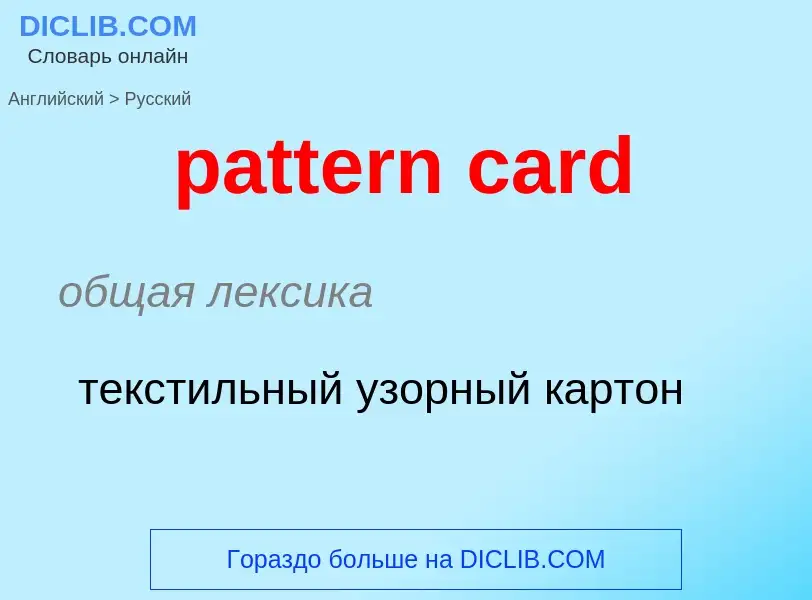Vertaling en analyse van woorden door kunstmatige intelligentie
Op deze pagina kunt u een gedetailleerde analyse krijgen van een woord of zin, geproduceerd met behulp van de beste kunstmatige intelligentietechnologie tot nu toe:
- hoe het woord wordt gebruikt
- gebruiksfrequentie
- het wordt vaker gebruikt in mondelinge of schriftelijke toespraken
- opties voor woordvertaling
- Gebruiksvoorbeelden (meerdere zinnen met vertaling)
- etymologie
pattern card - vertaling naar russisch
общая лексика
текстильный узорный картон
Definitie
Wikipedia
The Indian-head test pattern is a test card that gained widespread adoption during the black-and-white television broadcasting era as an aid in the calibration of television equipment. It features a drawing of a Native American wearing a headdress surrounded by numerous graphic elements designed to test different aspects of broadcast display. The card was created by RCA to be the standard image for their TK-1 monoscope, a simple video camera capable of producing only the image embedded within it. The pattern was introduced in 1939 and over the following two decades became a fixture of television broadcast across North America in 525-line resolution and (often in modified form) abroad in 525-and 625-line resolution until it was obsoleted by the rise of color television in the 1960s.

![generator]] of likely European ([[PAL]]) origin. generator]] of likely European ([[PAL]]) origin.](https://commons.wikimedia.org/wiki/Special:FilePath/Pattern extracted from a physical PM5644.png?width=200)




.jpg?width=200)
![Fitting a nettle/canvas-fabric on a [[dress form]] Fitting a nettle/canvas-fabric on a [[dress form]]](https://commons.wikimedia.org/wiki/Special:FilePath/Fitting muslin dummy.jpg?width=200)
.jpg?width=200)



![tailor's tack]] with thread to mark a pattern on fabric before cutting the fabric tailor's tack]] with thread to mark a pattern on fabric before cutting the fabric](https://commons.wikimedia.org/wiki/Special:FilePath/Basting pattern markings.jpg?width=200)

